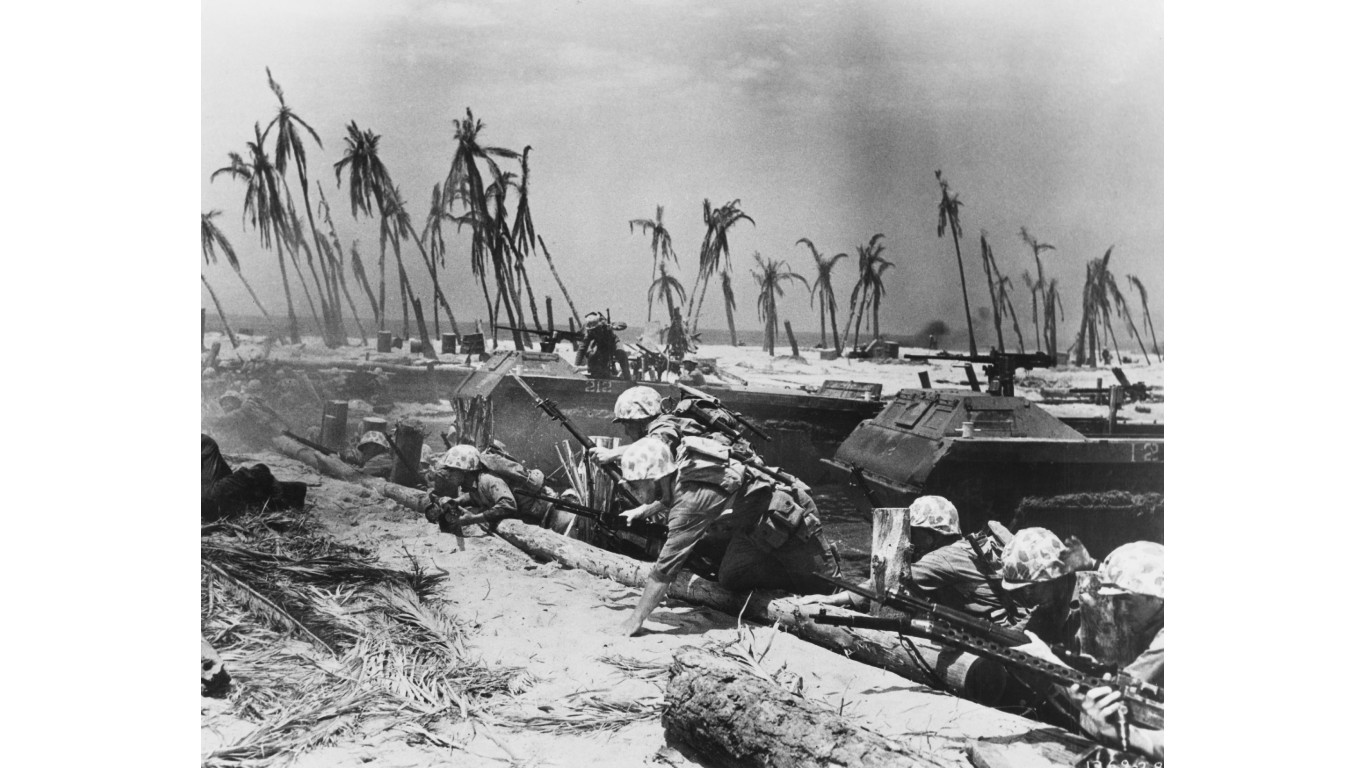

WWII lasted from 1939 until 1945. It was a truly global war with major battles that stretched from the Pacific islands to Japan and Russia, throughout Northern Africa, all of Europe, and with naval battles in both the Atlantic and Pacific. Entire cities were destroyed, particularly in Europe and Japan. The war against Japan was ended with the first and only use of nuclear weapons against a human population. No one knows how many people died in WWII, but the figure has been put as high as 80 million.
Some of the most famous battles in history were fought in WWII. Those which stand out in history books are D-Day and the fight to take Iwo Jima.
Many of the largest conflicts were between the Soviet Union, one of the Allied powers, and Nazi Germany, the main Axis power. These battles were characterized by the size of military resources involved and the significant civilian population loss.
The fog of war always complicates exact casualty totals. The estimates are the result of historians patching together primary documents over many years.
24/7 Wall St. picked the largest battle of World War II based on the number of casualties, which includes deaths and wounded. When available, we included civilian casualties. To create our list, we reviewed material from sources such as the Imperial War Museum in London, World War II battle database, and more.
The largest battle of WWII was the Battle of Stalingrad. Here are the details:
> Estimated total casualties: 2,000,000
> Date: July 17, 1942 to February 2, 1943
> Combatants: the Soviet Union and Nazi Germany
Click here to read the 18 largest battles of WWII
Sponsored: Want to Retire Early? Start Here
Want retirement to come a few years earlier than you’d planned? Orare you ready to retire now, but want an extra set of eyes on your finances?
Now you can speak with up to 3 financial experts in your area for FREE. By simply clicking here you can begin to match with financial professionals who can help you build your plan to retire early. And the best part? The first conversation with them is free.
Click here to match with up to 3 financial pros who would be excited to help you make financial decisions.
Thank you for reading! Have some feedback for us?
Contact the 24/7 Wall St. editorial team.



